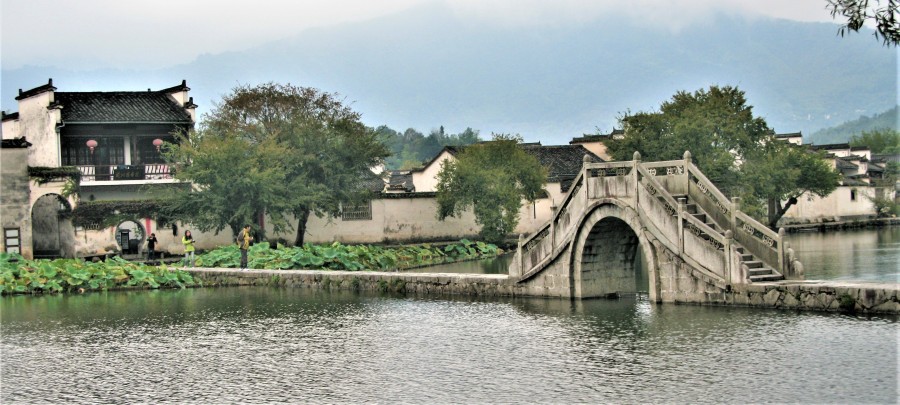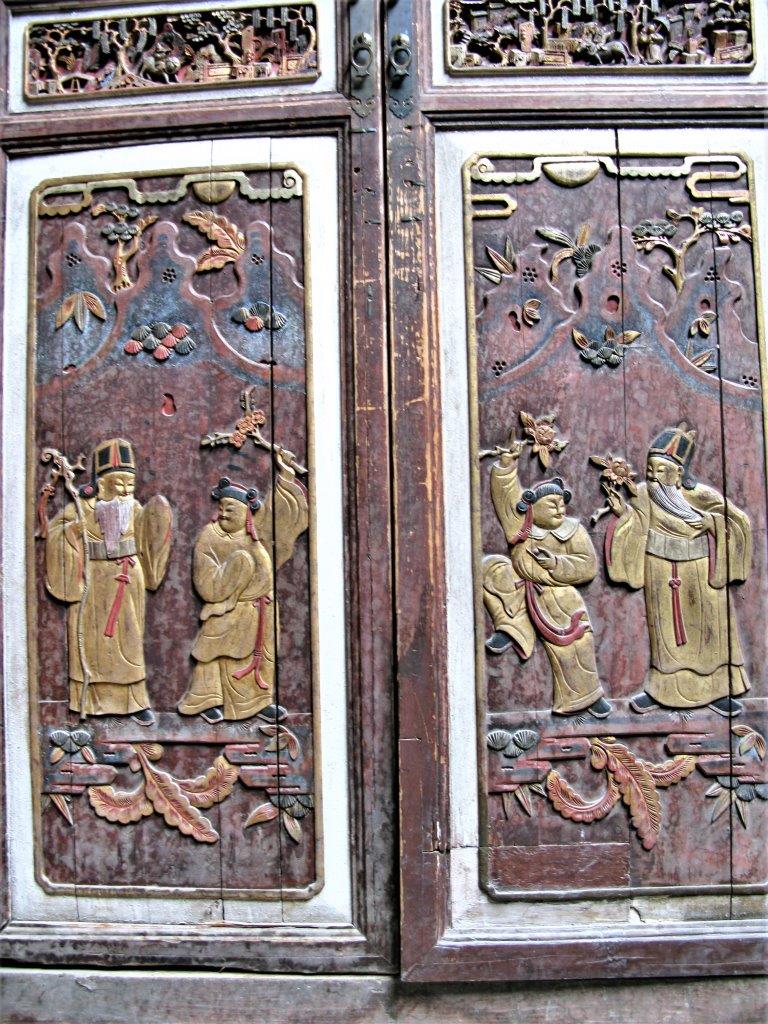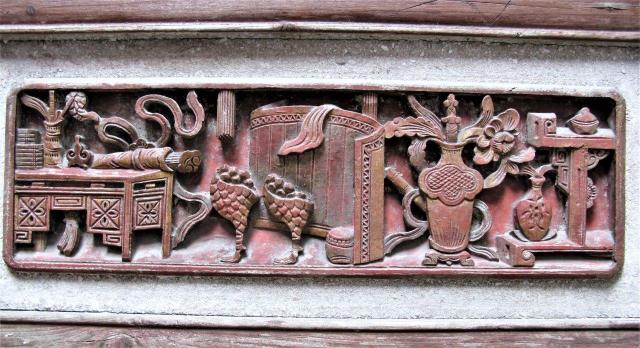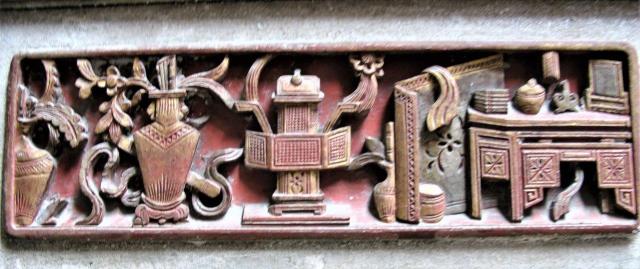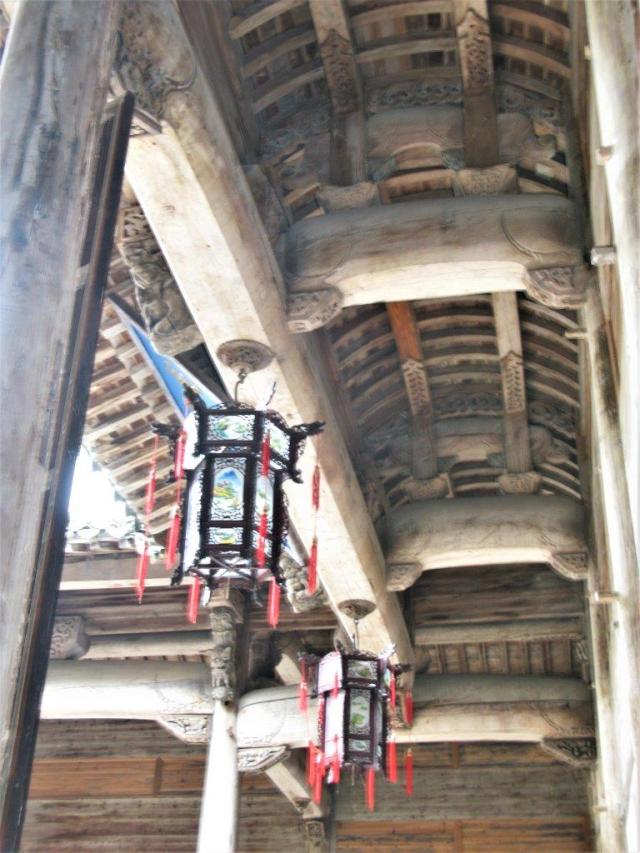Hongcun Ancient Village is an impossibly charming town straight out of a Chinese painting.
Often described as “the ancient village in Chinese paintings”, Hongcun is considered as one of the most picturesque village in the Huizhou region.
With lush green hills, lotus-covered ponds and tranquil lakes, this pedestrian-only village harks back to the peace and quiet of an ancient time with its distinctive Anhui-style architecture.
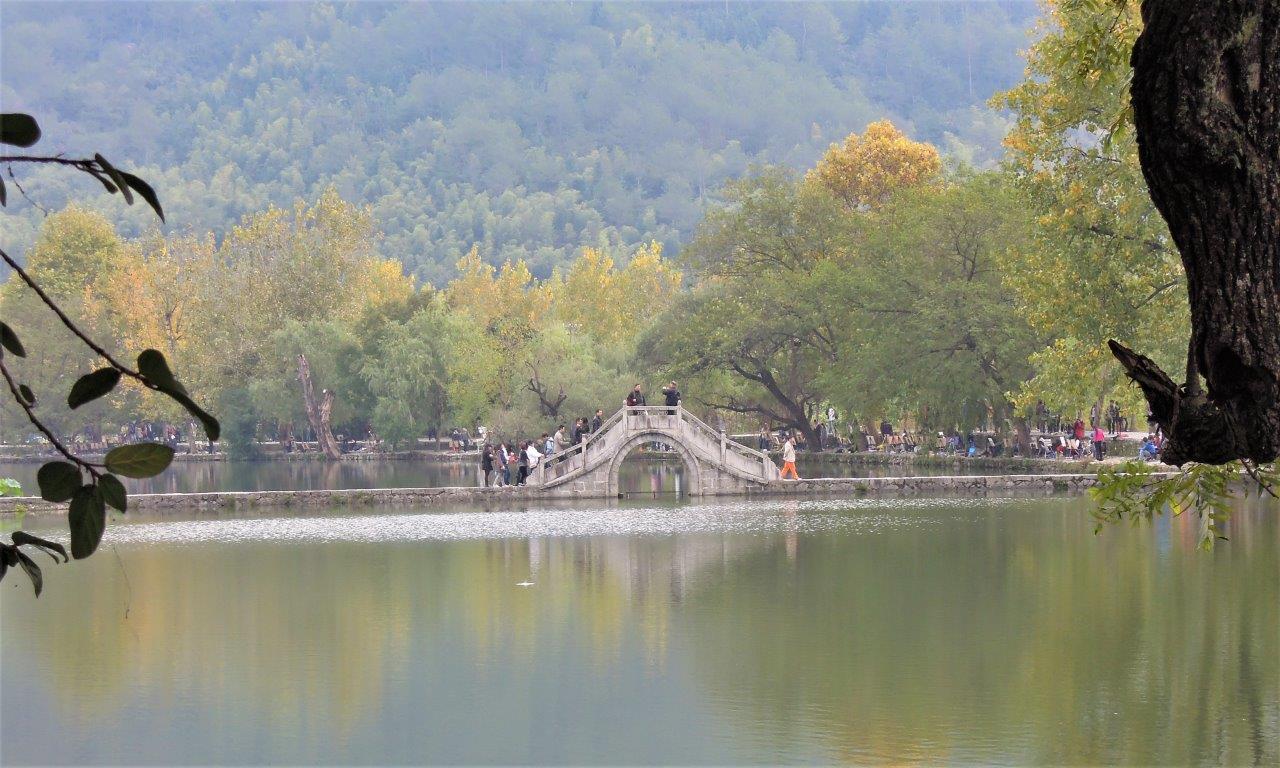
The traditional buildings are typified by white-washed high brick walls and contrasting grey tiled roofs and edging. Constructed during the Ming and Qing Dynasties, a number of well-preserved dwellings are now maintained as museums and open to visitors.
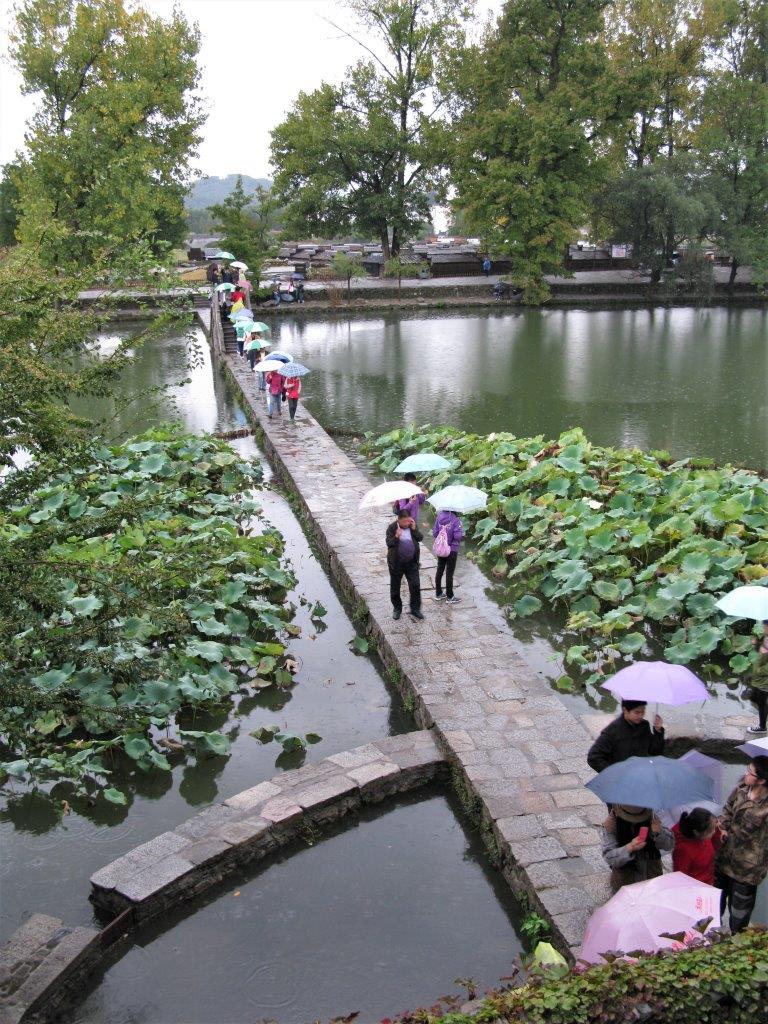
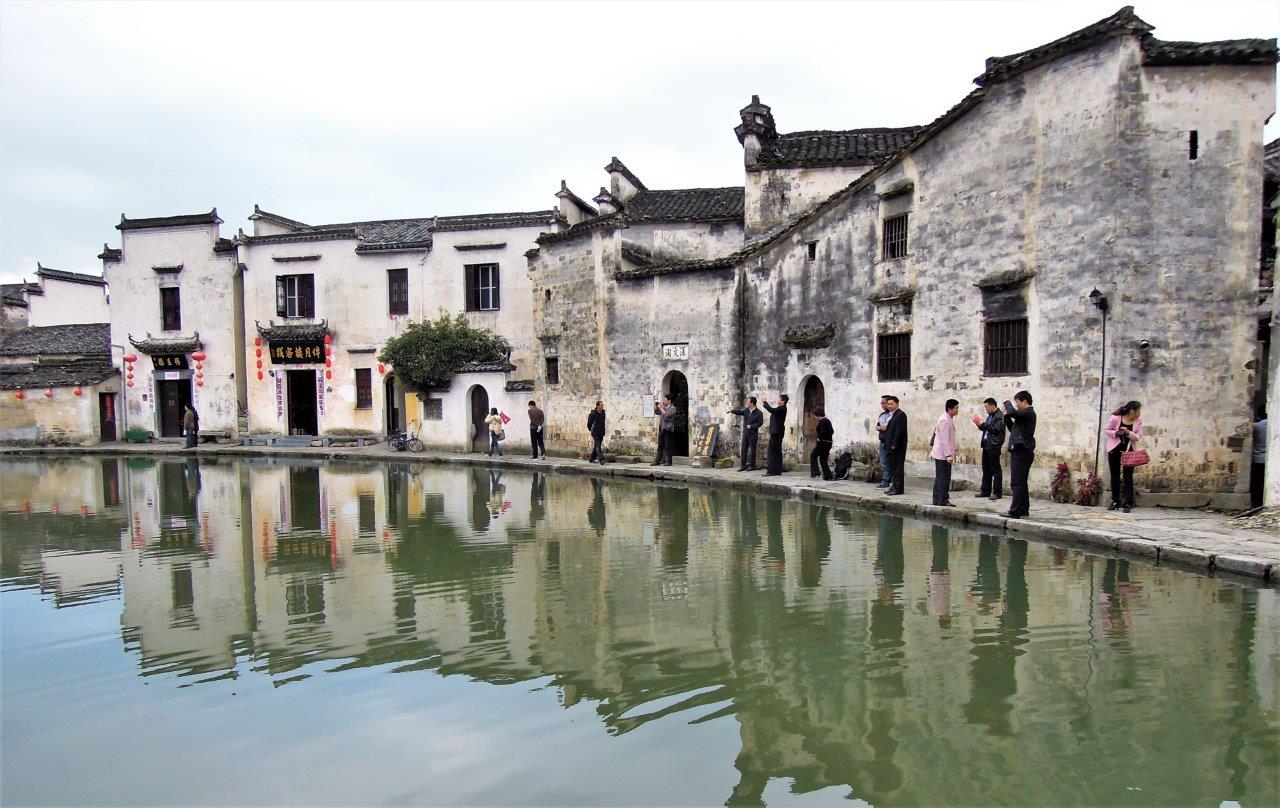
Welcome Change of Pace
After a grueling hike down Mt Huangshan (Yellow Mountain) in driving rain, we were ready for something more relaxing and less strenuous as we headed to Hongcun Ancient Village 70 km away. The two places couldn’t have been more different.
It started to rain just as we reached Hongcun. The owner of our homestay, who had come out to meet us quickly grabbed my bag and led us across the stone bridge to the most quaint and charming home just right of the bridge. While waiting for the rain to stop, we settled in and dried out our wet stuff.
Cooped up with no where to go, I discovered the balcony and spent an engrossing hour watching the endless stream of visitors taking the very same path I had taken on arrival.

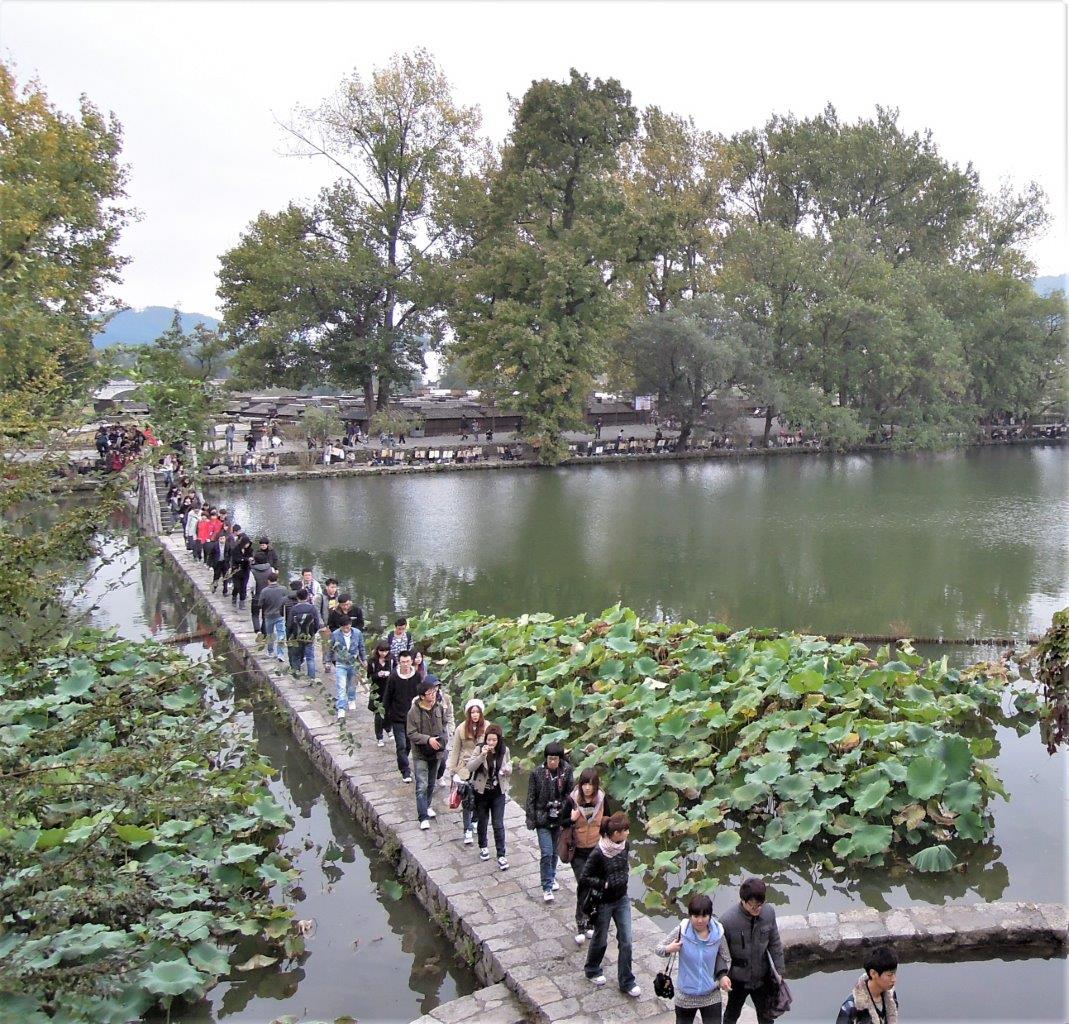
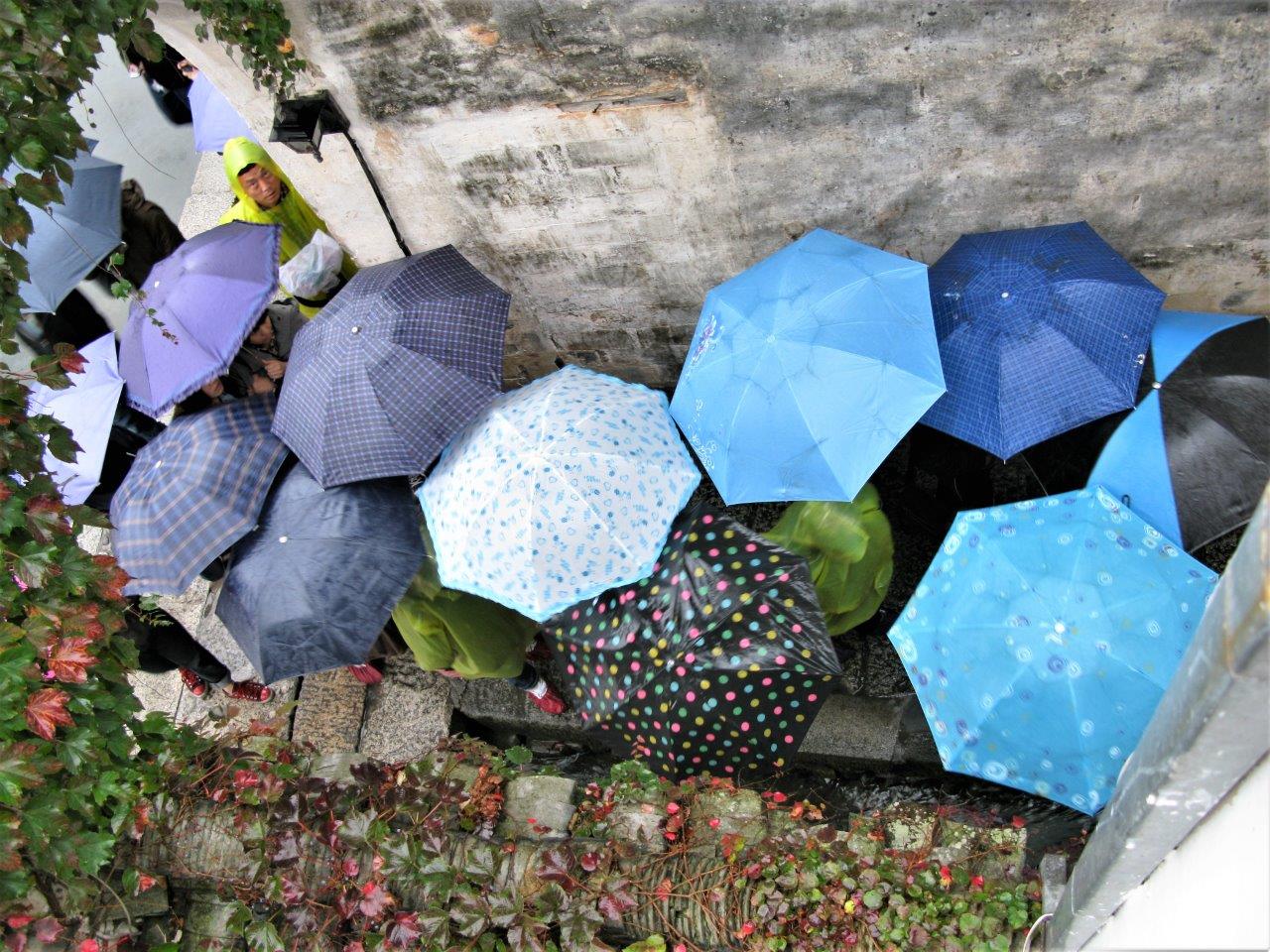
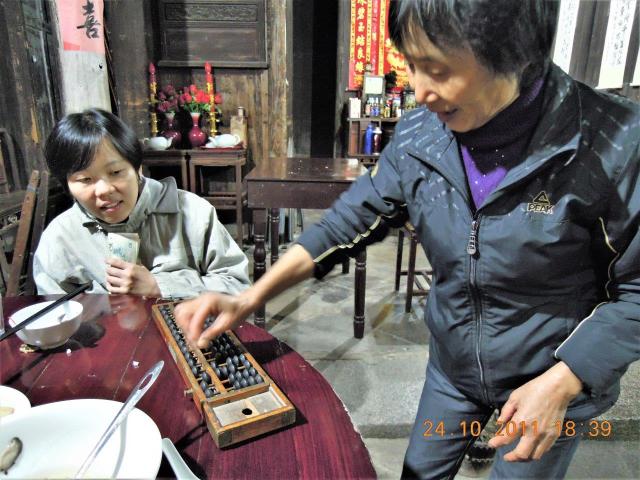
The owner and I developed a special relationship. I was in awe and couldn’t get over her using an abacus to total up our dinner bill.
She, on the other hand, was tickled pink by the fact that I look Chinese, have a Chinese name, am Chinese, but can’t speak or read Chinese. She would shake her head in disbelief each time she saw me switching the PC language to English before using it.
Inspiring Water Scenery
Up early the next morning, we headed out for a walk before breakfast. Deserted and peacefully quiet, we had the place to ourselves as we wandered through its many tiny alleyways.
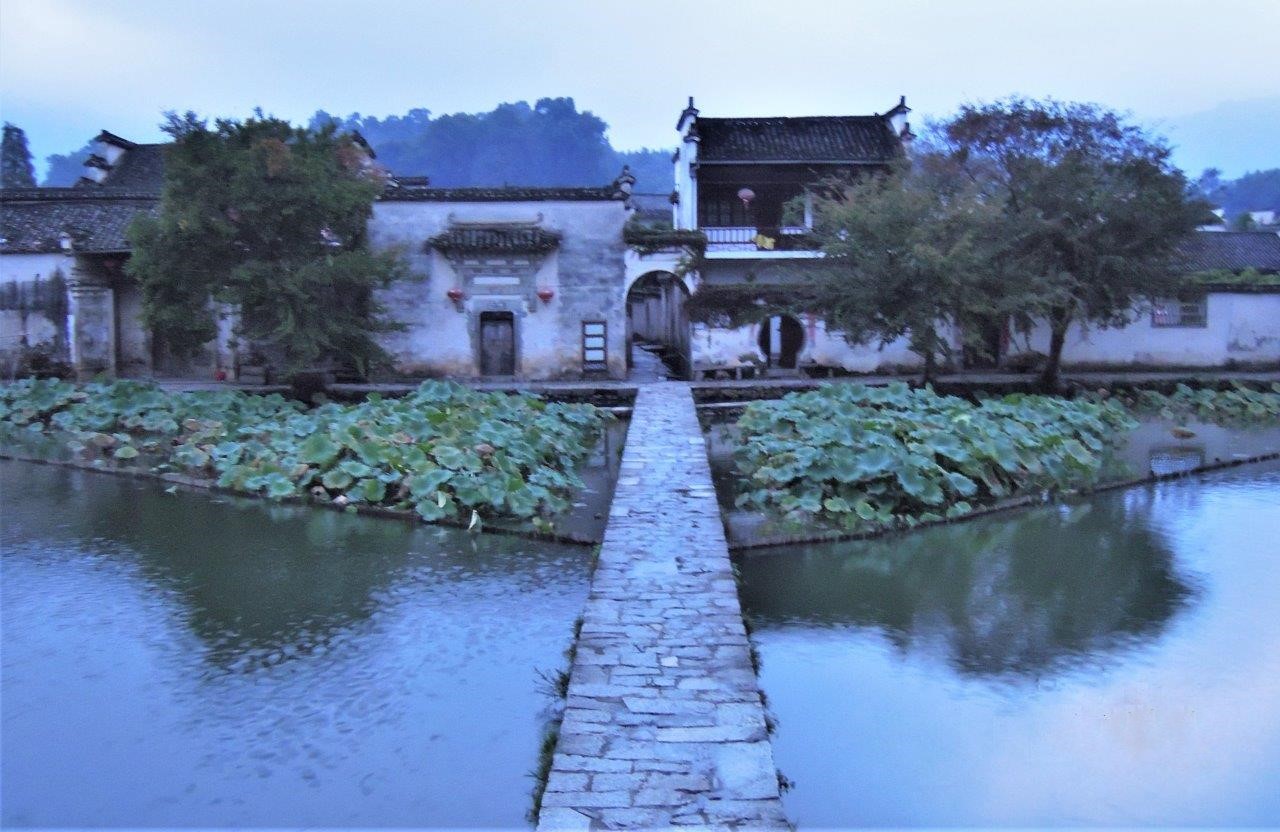
As night faded, the sky lightened and the village began to stir.

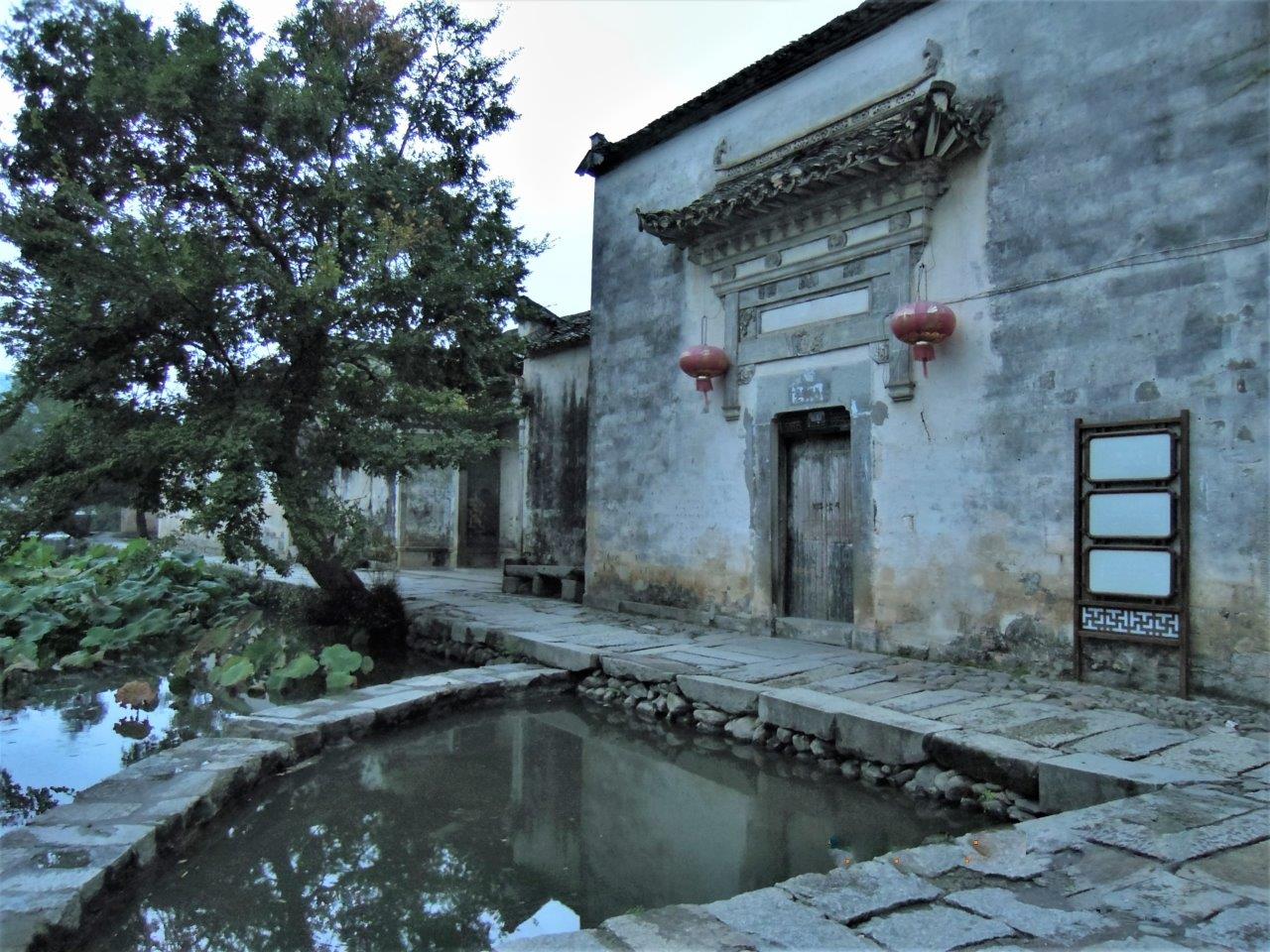
The layout of Hongcun resembles a sleeping ox surrounded by the green mountain with large rice fields. In line with fengshui principles, it is built in the shape of an ox with Leigang Hill as the ‘head’, two huge trees on the hill as the ‘horns’, the residences in the village as the ‘body’, half moon pond as the ‘stomach’ and the four bridges as the ‘four feet’. Inside the village, the winding streams and water canals are considered its ‘intestines’.
Moon Pond
Located in the heart of Hongcun, Moon Pond (the ‘stomach’) is at the center of the water system in Hongcun. The crescent-shaped pond was built about 600 years ago (1403 – 1424) to provide water for the village daily needs. Ditches were dug to direct water from natural springs and rivers here for storage, to be used for drinking, washing and fire fighting.
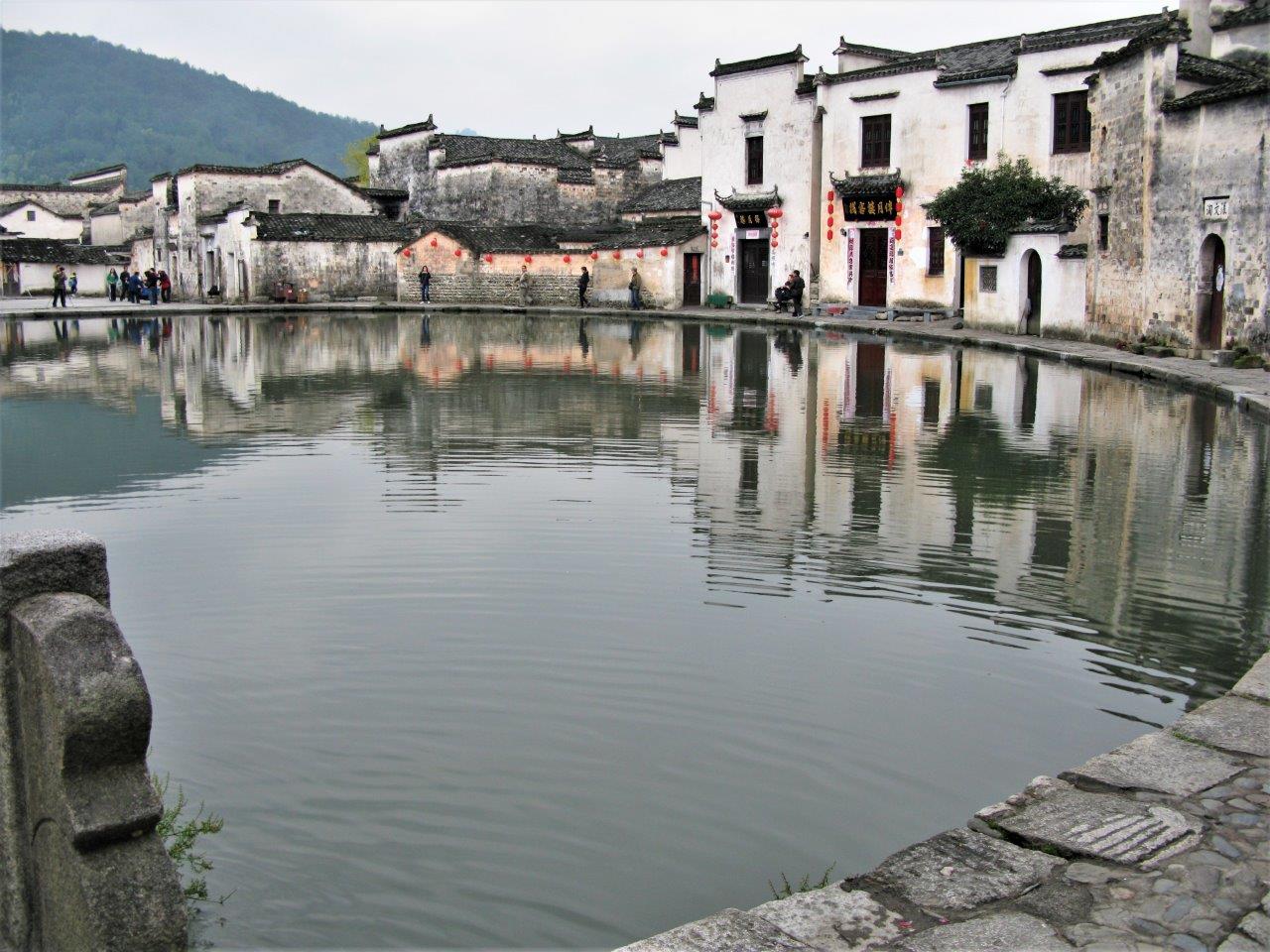
The mirror like stillness of the water gives it an incredibly smooth surface, making it the no.1 spot for photography.
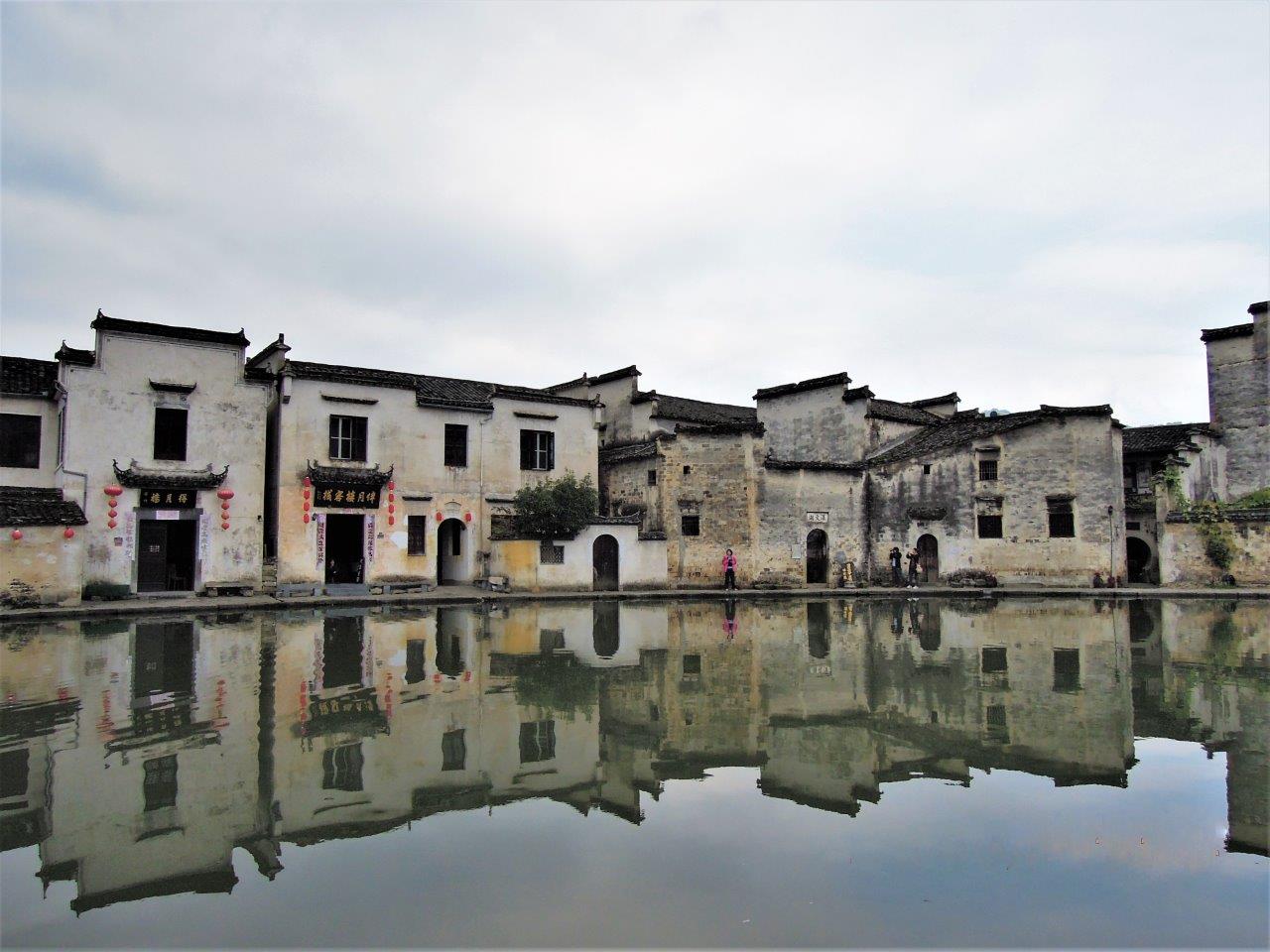
The all-year-round green water is so calm, it creates beautiful reflections of the ancient houses and bluestones around the pond.
Tip : Go early for amazing clear shots minus the crowd.
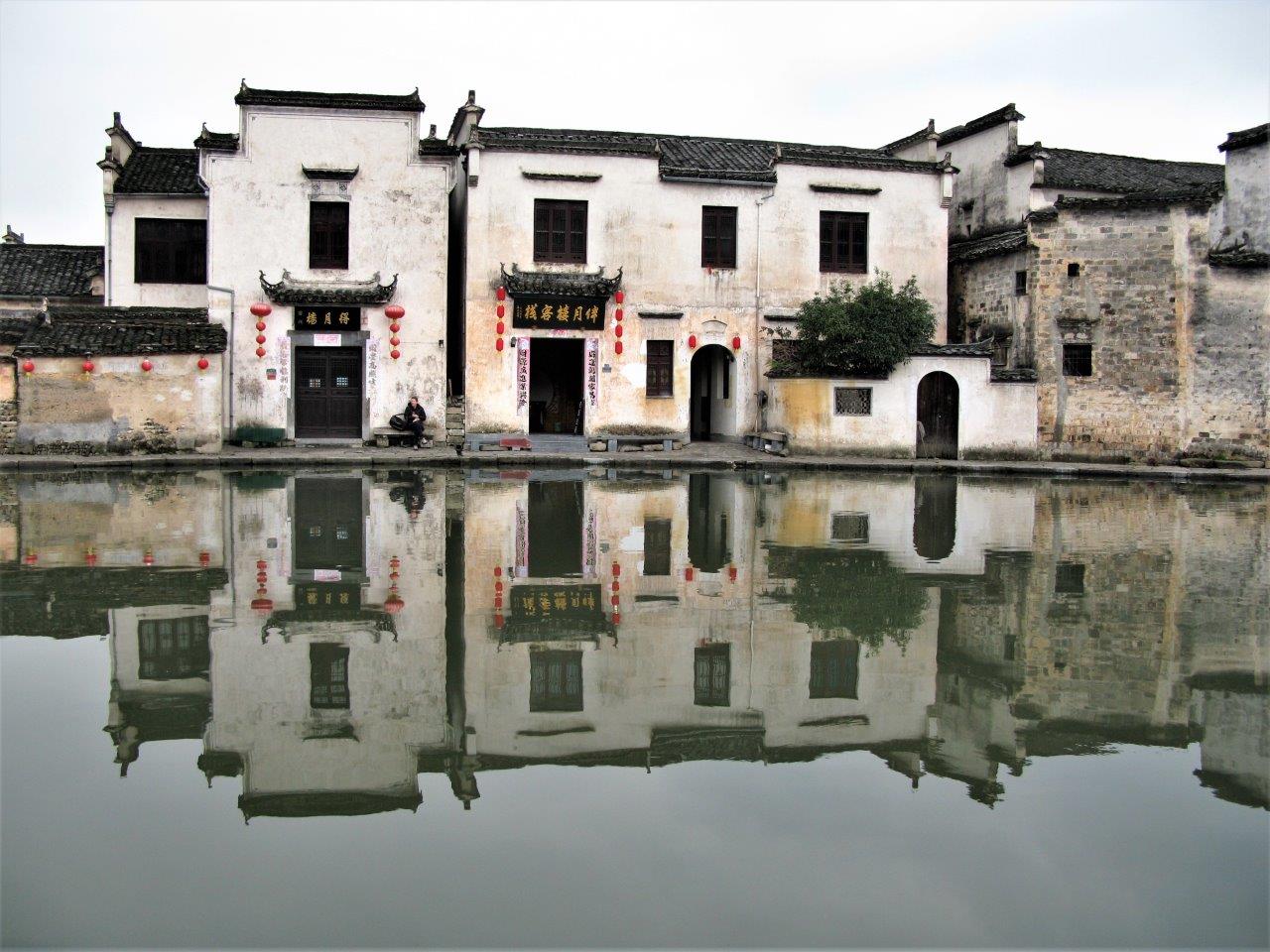
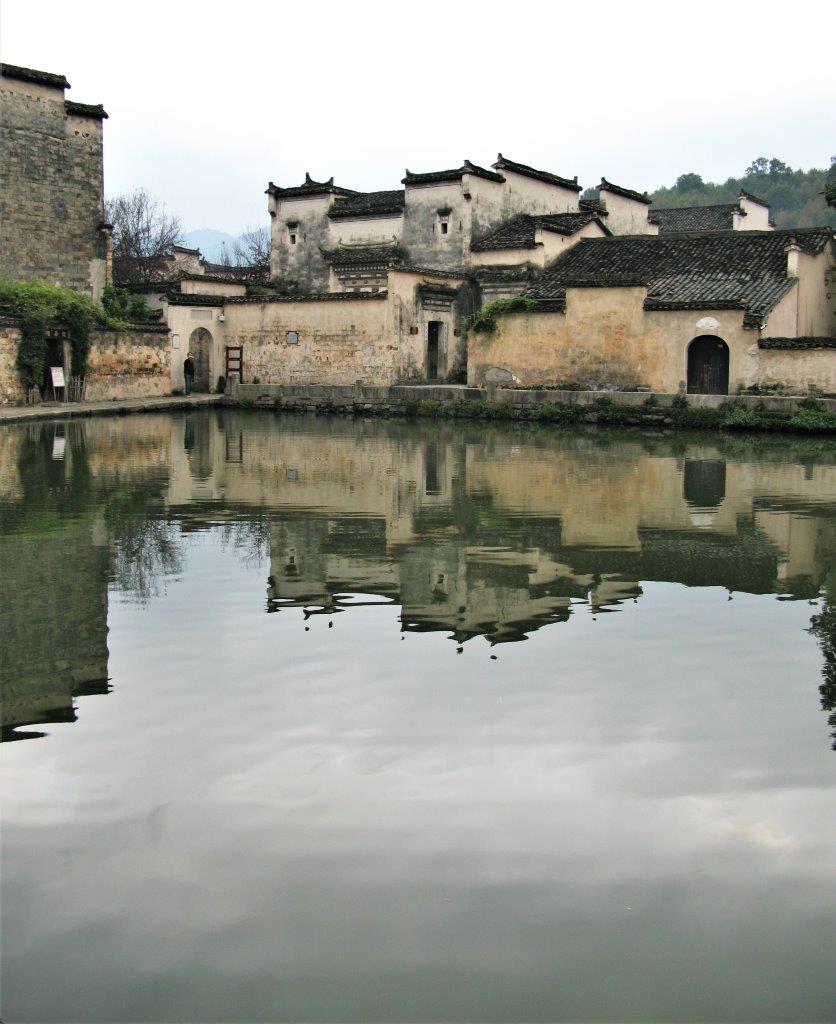
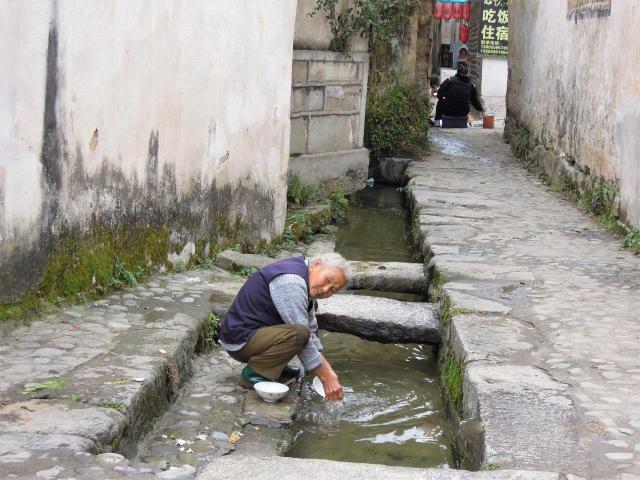
A 400-year-old waterway connects each residential household to the two water sources in the town, with most of the streets built alongside them.
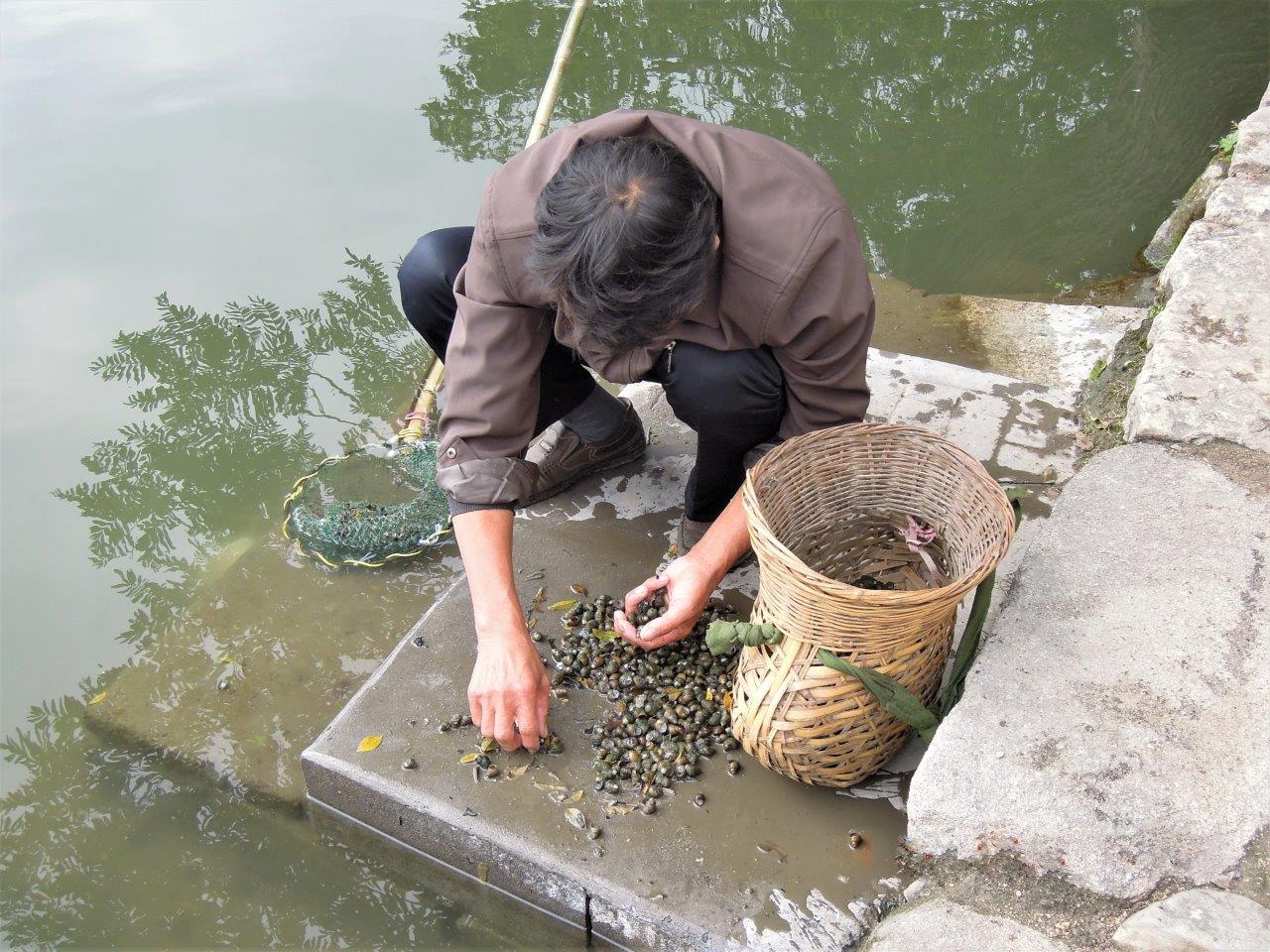
Till today, locals use the water for washing and food preparation. The lake is an alternative food source with its abundant marine life.
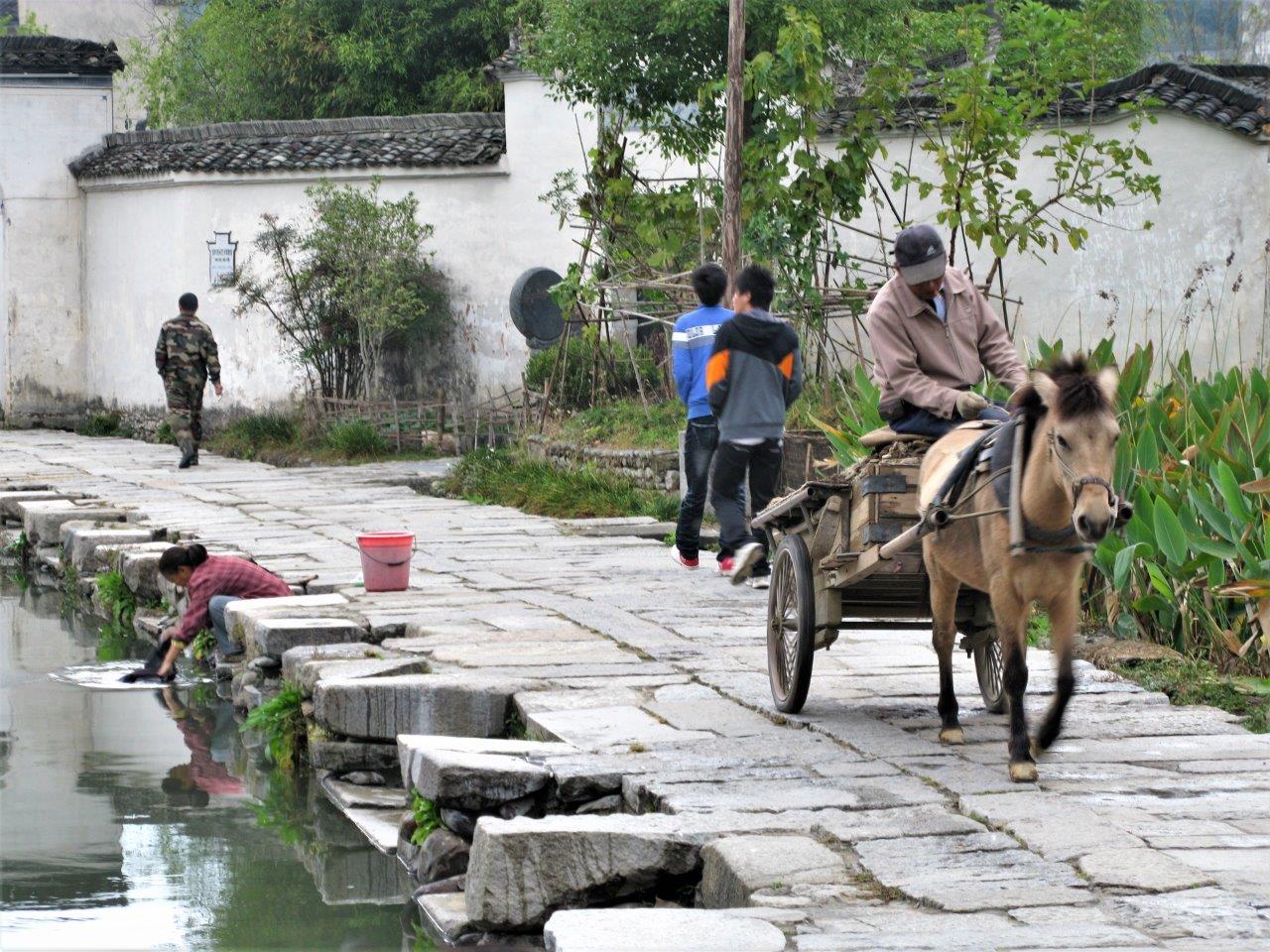
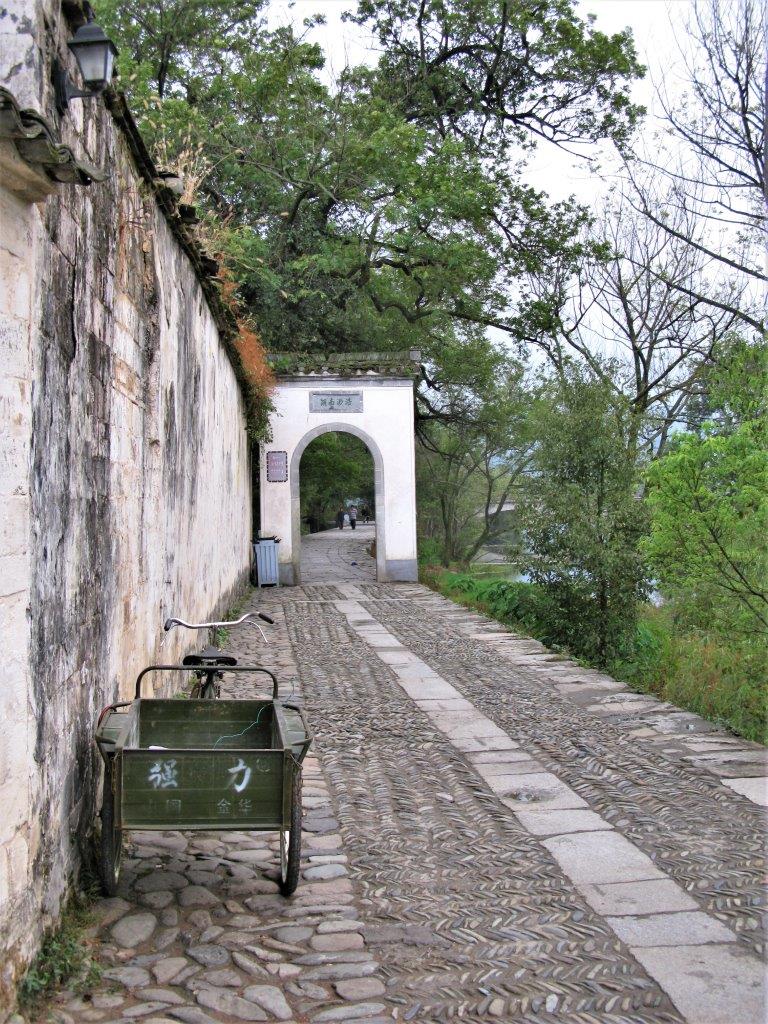
South Lake (Nanhu)
Located at the southern edge of the village, South Lake was built in 1607, about 200 years later than Moon Pond. By then an alternative water source was required as Moon Pond could not meet the villagers’ growing needs for water.
Fringed by old poplar trees with graceful branches of leaves and weeping willows, the lake is a vision of tranquility. Besides attracting birds and ducks, visitors flock here by the thousands for magnificent views of the sky, surrounding mountains and houses reflected on its pristine surface.
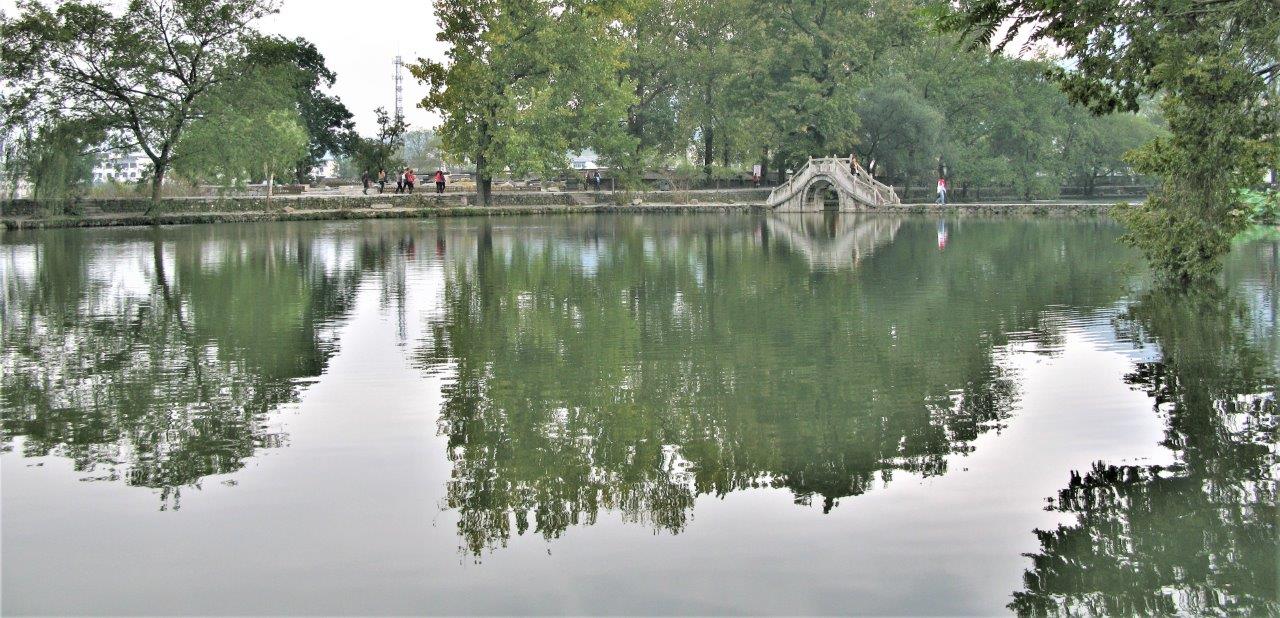
Chengzhi Hall
Chengzhi Hall is a stunning piece of architecture with nine open roofed yards and more than 60 rooms. Constructed entirely of bricks and wood in 1855, this former residence of wealthy salt merchant Wang Dinggui is the best-preserved old building in Yixian County.
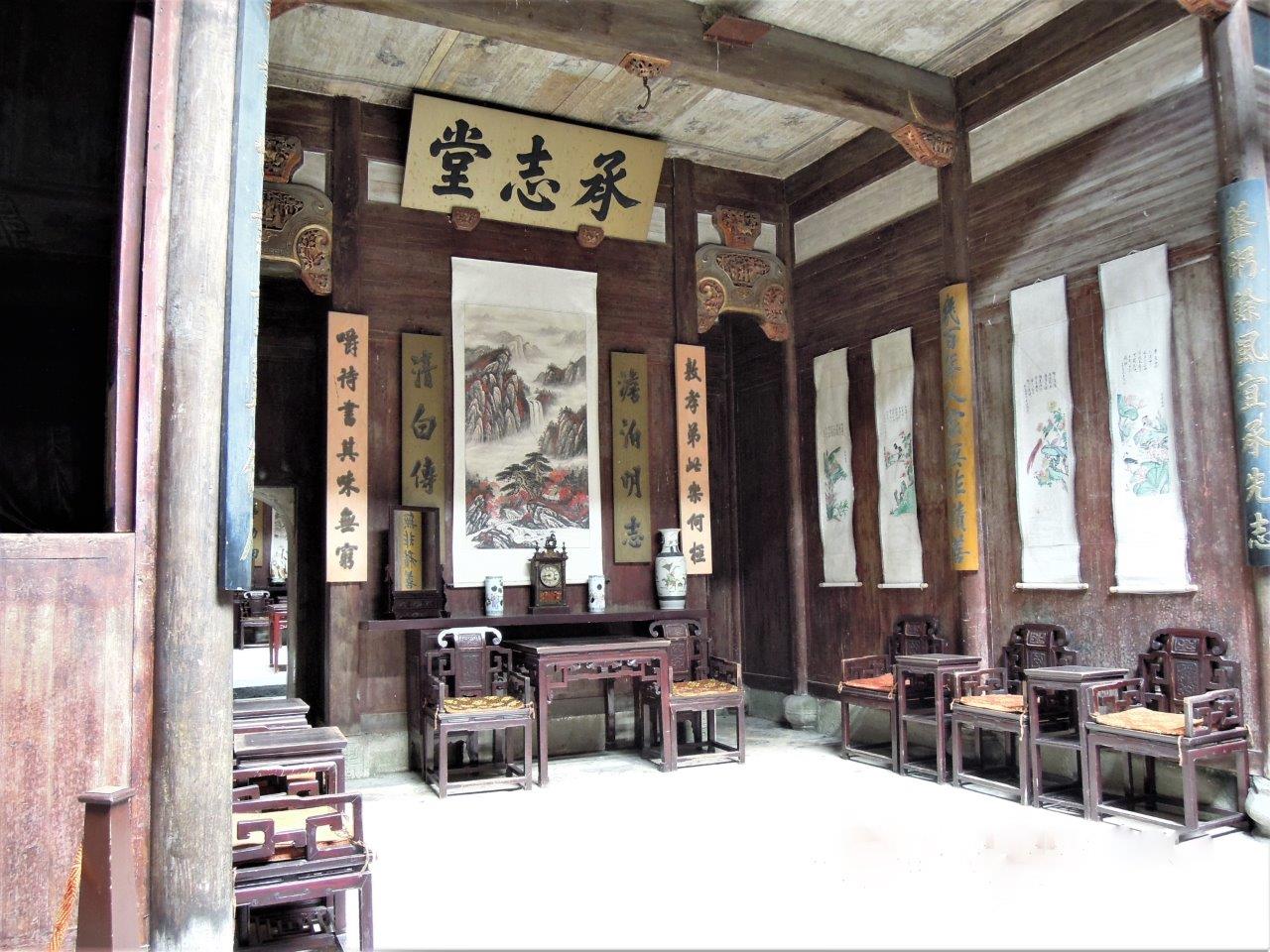
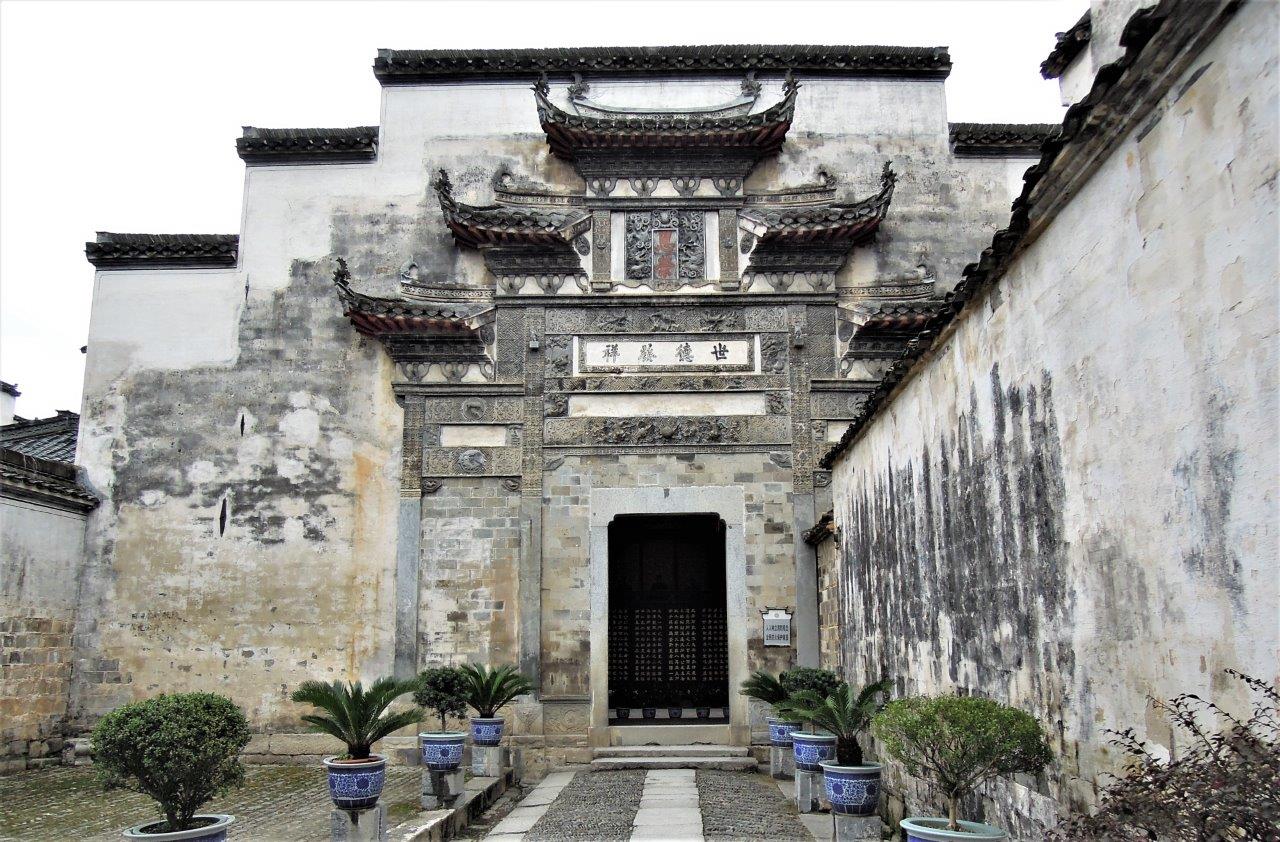
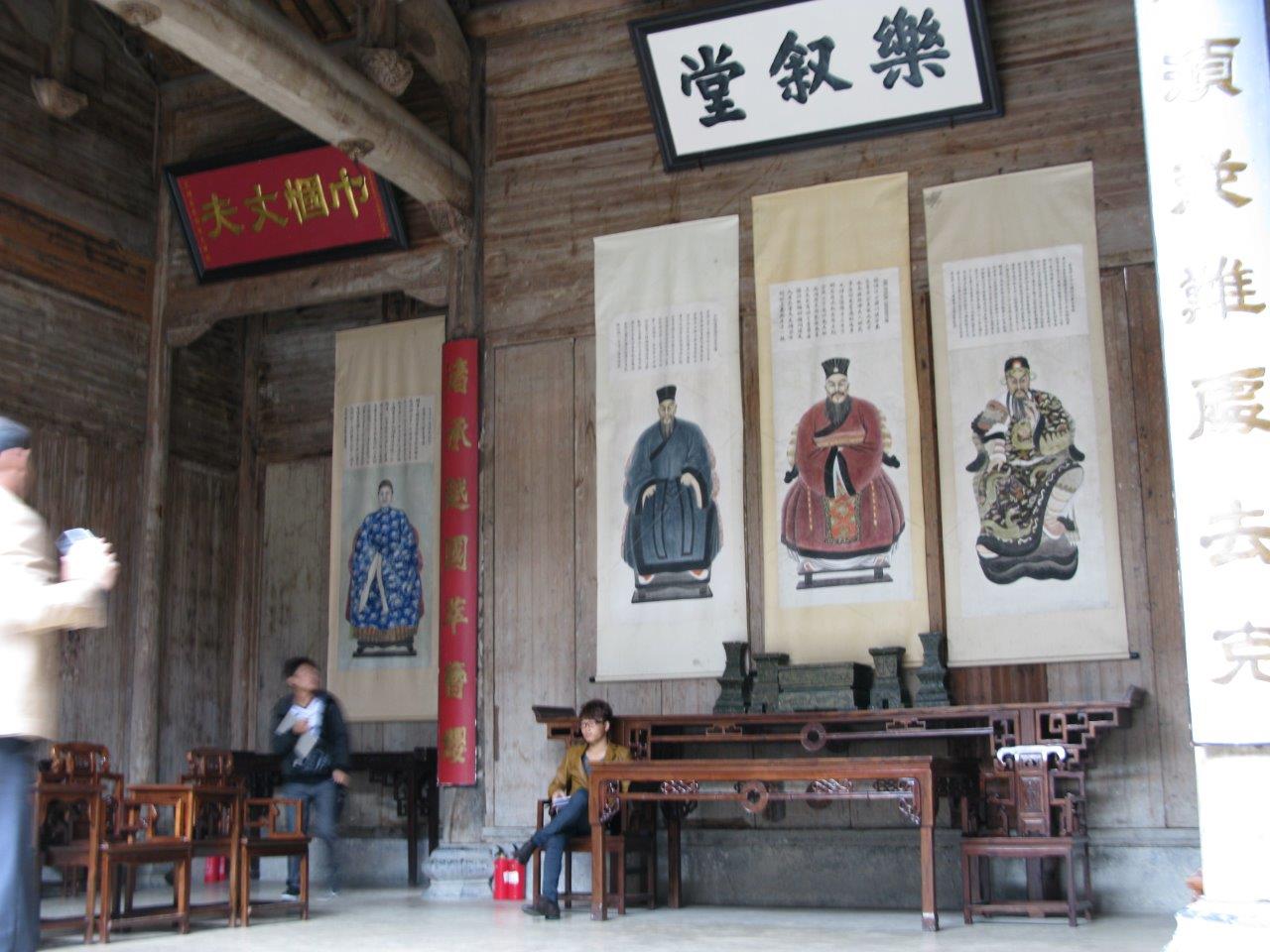
Our plan was to tag along with other tour groups to listen in on the commentary. Unfortunately, there were no English speaking guides. However, that did not stop me from appreciating the intricate carvings and woodwork.
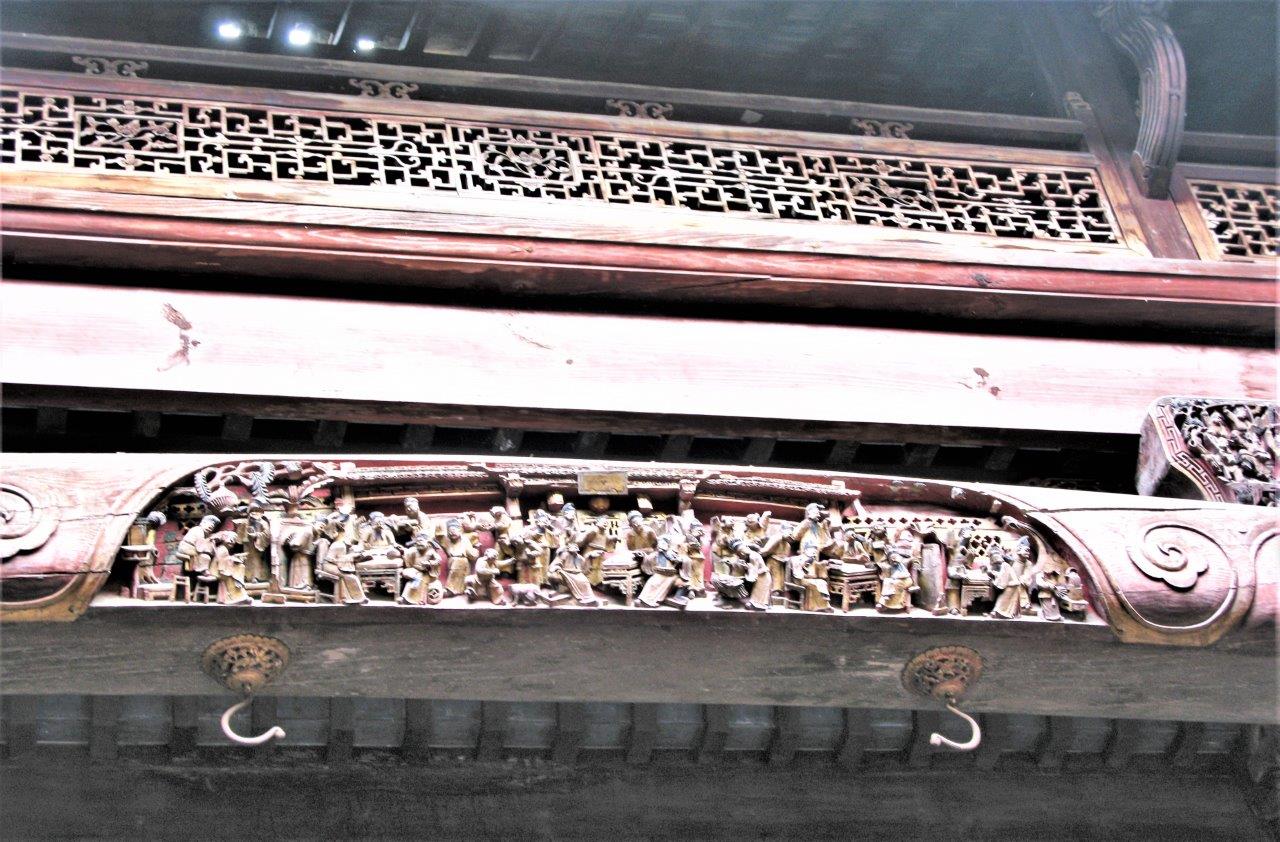
Wooden crossbeams, wall panels, doors and windows are covered in ornate depictions of nature, Chinese mythology or scenes of every day life in the Qing Dynasty.
Apparently, five kilograms (11 pounds) of gold was used in gilding the wood carvings!
PAINT ME! SKETCH ME!
Never ever have I come across such an irresistible postcard-perfect place.
Throughout our morning walk, we saw art students armed with drawing pad and pencils busily sketching away everywhere we went. That explains the presence of art shops selling supplies such as brushes, inks, pencils and charcoal.
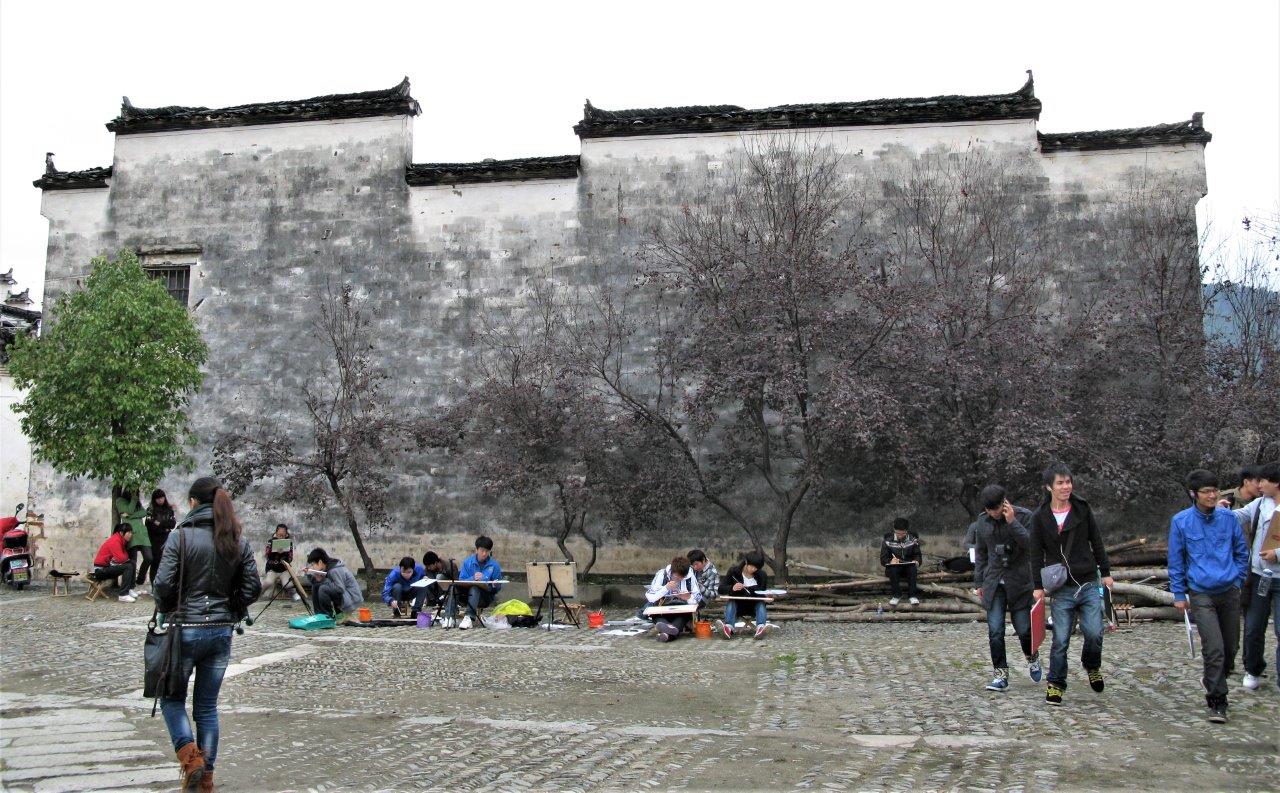
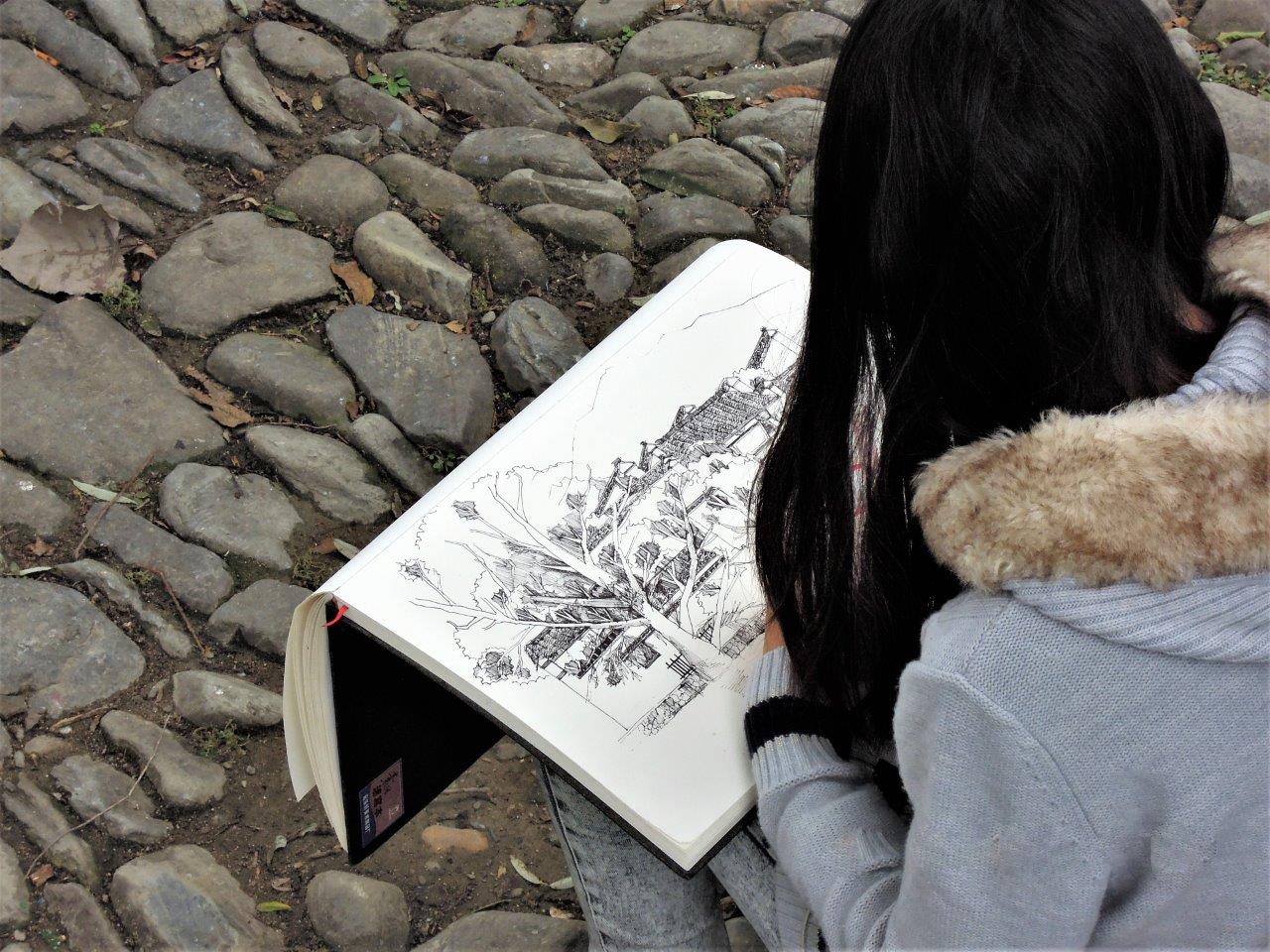
By the time we were ready to leave, an army of aspiring artists appeared to have descended on Hongcun, setting up easel and canvas at every available spot along the perimeter of South Lake.
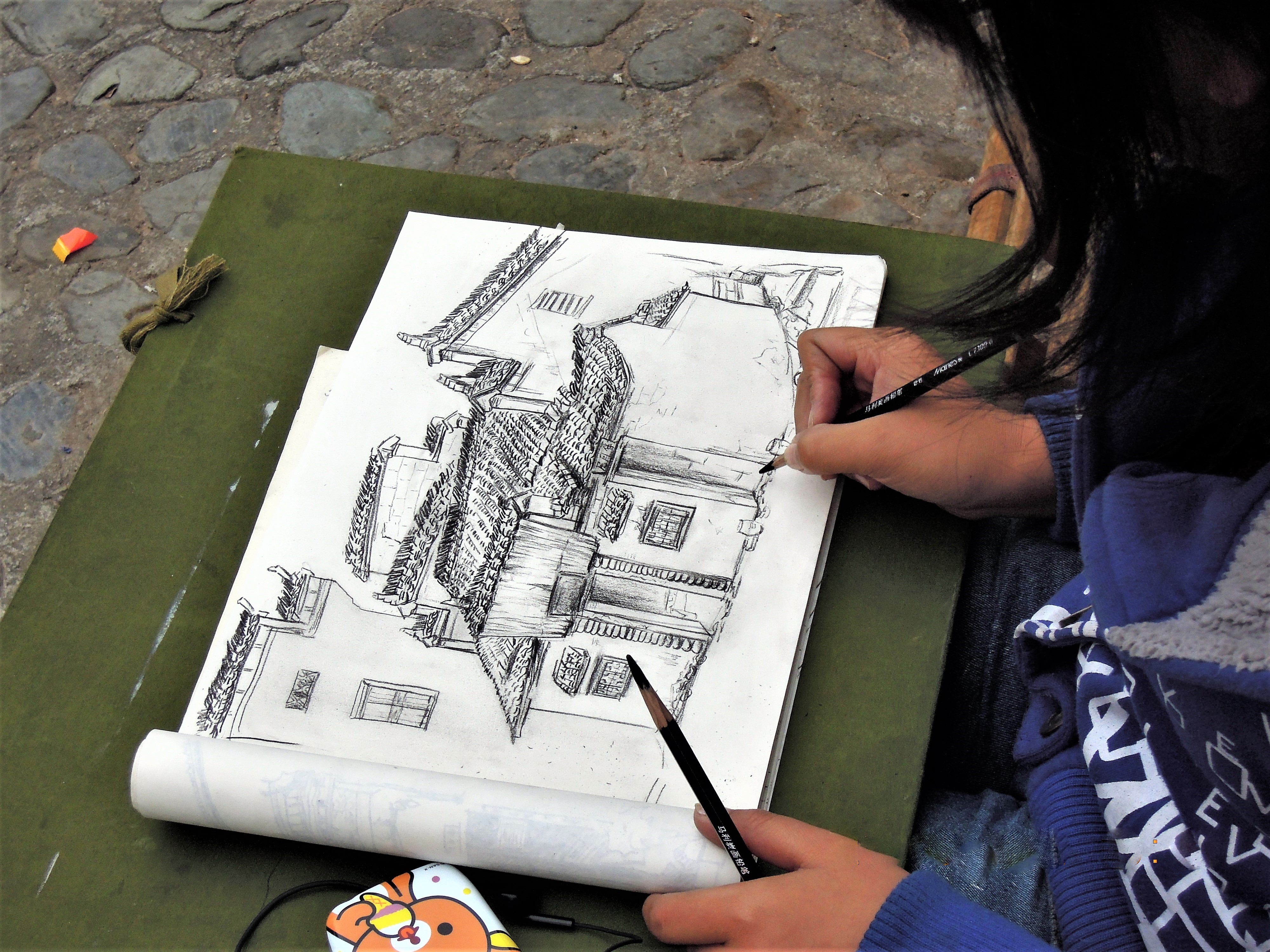
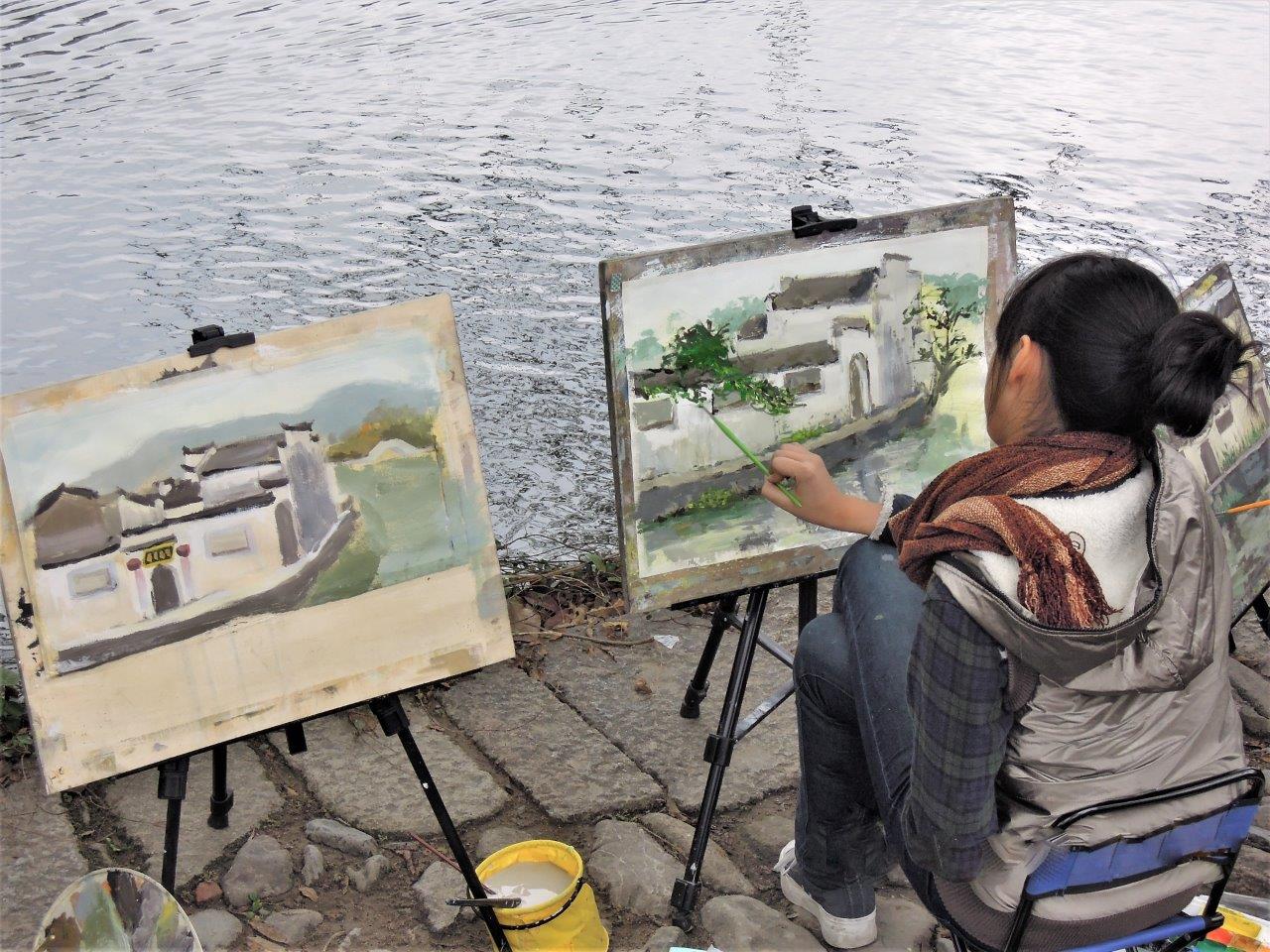
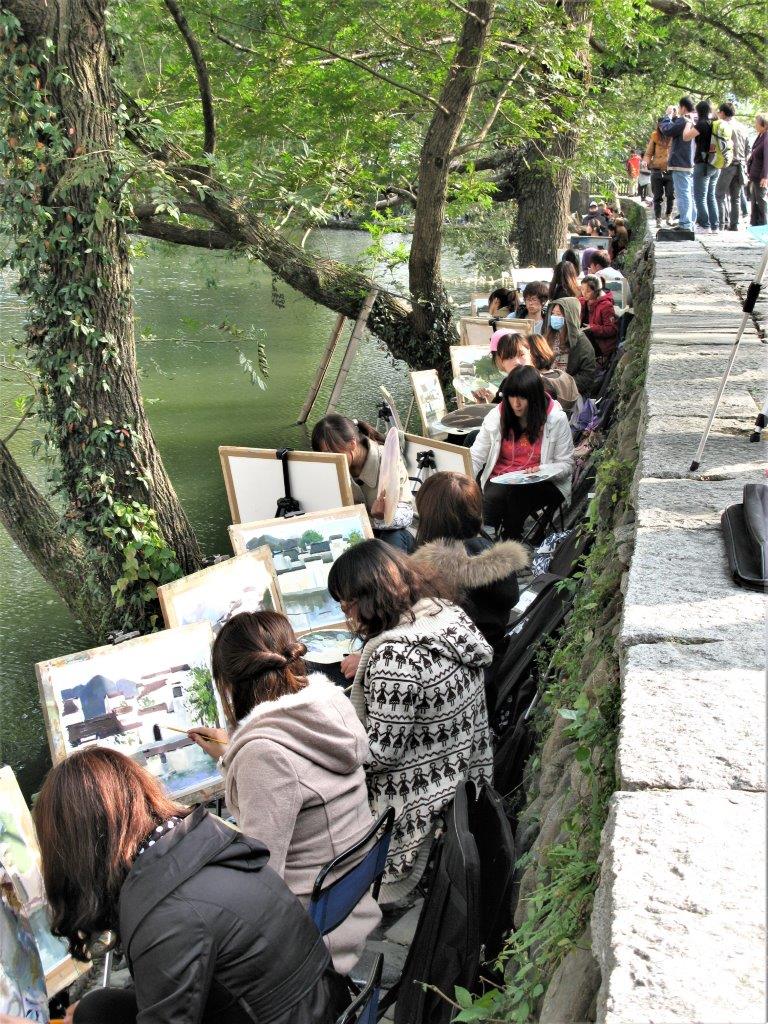
Visited 24 October 2011
Hongcun Ancient Village dates back to the Southern Song Dynasty (1127–1279). Originally the home of the Wang (汪) family, the village houses around 140 original Ming (1368-1644) and Qing (1644-1911) style residences. The exquisite houses, ancestral halls and memorial archways were built with recognizable white walls and grey slated roofs. Located in Yixian County, the 900-year-old village of Hongcun is about 65 km from Huangshan Tunxi downtown area, and 37 km from Mt. Huangshan Scenic Area. Hongcun Village was featured in Ang Lee's Oscar-winning Hollywood film 'Crouching Tiger, Hidden Dragon (2000)'. Together with Xidi Ancient Village, Hongcun was designated a UNESCO World Heritage Site in 2000, because of its exceptional preservation of the architecture and city plan of a rural village in feudal China.
